

Do you have to give an extemporaneous speech but don't know where to start? You're in the right place!
Whether you're a student in a debate or a professional giving an impromptu speech, this guide will help you craft a great speech. We'll explain what an extemporaneous speech is, give you examples, and share some tips to help you understand the topic better.
This step-by-step guide will help you write a fantastic extemporaneous speech that will captivate your audience.
So, let's get started!
On This Page![]()
- 1. Understanding Extemporaneous Speech
- 2. 7 Easy Steps to Writing an Extemporaneous Speech
- 3. Extemporaneous Speech Examples
- 4. Extemporaneous Speech Topics
- 5. Tips for Improving Extemporaneous Speech Delivery
Understanding Extemporaneous Speech
An extemporaneous speech is a type of speech delivered with little to no preparation, often with the help of notes or an outline. Unlike a memorized or read speech, an extemporaneous speech allows for more natural delivery and interaction with the audience, as the speaker can adapt to the audience's reactions and feedback in real-time.
This style of speech writing is commonly used in debates, public speaking events, and professional presentations.
An example of an extemporaneous speech situation is when a student is asked to give an impromptu talk on a current news headline in front of the class. Note that, unlike manuscript speeches, extemporaneous speeches are not read word-for-word from a prepared script. They allow for more flexibility and spontaneity in delivery.
Comparing Impromptu and Extemporaneous Speech
The above extemporaneous speech definition might make you think that impromptu and extemporaneous speech sound similar. But that is not the case.
Let’s take a look at the key difference between the two speech types:
- Impromptu speeches do not allow preparation for the speech and they often lack structure and familiarity.
- On the other hand, extemporaneous speeches require a little preparation time, some organization, and familiar topics.
Let’s take a look at some of the advantages and disadvantages of extemporaneous speech.
Advantages of Extemporaneous Speech
- Enhanced Communication Skills: Improves public speaking, listening, and interpersonal communication skills.
- Confidence Boost: Regular practice instills self-assurance in various speaking situations.
- Adaptability: Speakers learn to tailor their message to the interests and concerns of different audiences.
- Quick Thinking: Extemporaneous speaking sharpens the ability to think quickly and make decisions on the spot.
Disadvantages of Extemporaneous Speech
- Lack of Preparation: Speakers may deliver incomplete or less coherent presentations due to limited preparation.
- Potential for Inaccuracy: The absence of time for thorough research can lead to providing inaccurate information.
- Nervousness: The pressure of impromptu speaking can lead to anxiety and reduced confidence.
- Time Constraints: Speakers must manage their time effectively to stay within the allotted timeframes, adding to the pressure.
7 Easy Steps to Writing an Extemporaneous Speech
Let’s take a look at some easy steps to writing an extemporaneous speech that you can follow along:
Step 1 - Research and Gather Information
To write a compelling extemporaneous speech, you must gather relevant information quickly. This step includes:
- Identifying the Topic or Prompt: Understand the subject or question you'll be speaking about.
- Finding Reliable Sources: Utilize trustworthy resources to gather facts, statistics, and arguments.
Step 2 - Create an Extemporaneous Speech Outline
An outline will give you a basic blueprint of the speech and can even help you weed out any potential mistakes in the speech format.
Though the speech outline can vary depending on the type of speech you are writing, here is an extemporaneous speech format you can follow:
|
Step 3 - Crafting a Strong Introduction
It is crucial to capture your audience's attention in the introduction and set the tone for your message.
Here is what you need to keep in mind when writing the introduction;
- Use an attention-grabbing technique to engage your listeners.
- Formulate a clear and concise thesis statement that clearly states the main point of your speech.
- Explain why the topic is relevant or important.
Step 4 - Developing Compelling Main Points
The main body of your speech should convey your message effectively and coherently. Here are the things you should keep in mind;
- Identify key ideas and supporting details to determine the main arguments. If possible, try to gather and mention any evidence to back up your arguments.
- Make sure that your speech flows logically and smoothly.
- Use real-life examples, personal stories, and relevant statistics to make your points more compelling and understandable.
Step 5 - Engaging the Audience
Engaging your audience is essential for an effective extemporaneous speech. You can achieve that by maintaining your body language to establish a connection with your listeners.
You should also develop the audience's interests by tailoring your speech to address their concerns and interests.
Step 6 - Handling Transitions
Transitions are essential for keeping your speech coherent and organized. This step includes:
- Make sure your ideas flow seamlessly in the speech, creating a natural progression.
- Use words and phrases that act as guideposts for your audience through your speech.
- Avoid sudden changes in the topic that could leave your listeners confused.
Step 7 - Navigating the Conclusion
Concluding your speech effectively leaves a lasting impression. Here is what you should keep in mind when writing:
- Recap key points to ensure your audience leaves with a clear understanding of your main arguments.
- Make your message resonate with your listeners by delivering a powerful closing statement.
- Invite questions or comments from your audience to engage them.
Extemporaneous Speech Examples
Let’s take a look at an example of an extemporaneous speech situation:
The Impact of Social Media on Modern Society Ladies and gentlemen, today, I want to talk about a topic that is not only relevant but also deeply integrated into our daily lives: the impact of social media on modern society. In a world where we're constantly connected, it's essential to understand the influence and implications of platforms like Facebook, Twitter, and Instagram on our lives. First, let's look at the positives. Social media has redefined the way we communicate. It allows us to stay connected with friends and family, no matter where they are in the world. We can share our experiences, photos, and stories instantly. It has even played a significant role in mobilizing social and political movements, creating awareness of issues that might have otherwise been overlooked. Moreover, social media is a valuable tool for businesses and entrepreneurs. It provides a platform for marketing and brand promotion, reaching a global audience with just a few clicks. The power of influencer marketing and digital advertising can't be underestimated. However, there's another side to the story. Social media can be addictive, leading to what some call "doomscrolling." Many people find themselves scrolling through their feeds endlessly, which can be detrimental to mental health. The constant comparison and the pressure to present a perfect image of our lives can lead to anxiety and depression. Moreover, the spread of misinformation and "fake news" on social media has real-world consequences. It can influence elections, create public panic during crises, and perpetuate harmful stereotypes. In conclusion, social media is a double-edged sword. It has brought the world closer, facilitated communication, and revolutionized the business world. However, it has also raised concerns about mental health, privacy, and the spread of disinformation. As users, we must use social media responsibly, be critical of the content we encounter, and recognize its potential impact on our lives. |
The above example of extemporaneous speech addresses the topic of the impact of social media on modern society. It provides a well-structured, balanced, and informative discussion of the subject while maintaining a clear and engaging delivery style.
Here are some more extemporaneous speech samples to let you have a better understanding of how to write a speech;
Be sure to check out more speech examples to have a better understanding of structuring and formatting a speech.
Extemporaneous Speech Topics
Here are some ideas for extemporaneous speech that you can use for practice or in various speaking situations:
- The impact of urban farming on local food security
- The role of virtual influencers in shaping consumer behavior
- The potential of biohacking for personal health optimization
- The influence of ancient philosophy on modern leadership styles
- The implications of space tourism for global economies
- The resurgence of vinyl records in the digital age
- The effect of minimalism on consumer culture and sustainability
- The role of augmented reality in enhancing historical site tours
- The cultural significance of traditional tattoos in contemporary society
- The ethical considerations of using AI in criminal justice systems
Be sure to check out more speech topics to select the one that stands out to you the most.
Tips for Improving Extemporaneous Speech Delivery
Here are some extemporaneous speech tips you can use to improve the delivery of your speech:
- Know Your Topic: Start by having a solid understanding of your topic. The more you know, the more confident you'll feel when speaking.
- Speak Clearly and Slowly: Pronounce your words clearly and speak at a moderate pace. Avoid rushing through your speech.
- Be Mindful of Fillers: Avoid using fillers such as "um," "uh," or "like." Practice eliminating these from your speech.
- Manage Nervousness: Nervousness is natural. Practice relaxation techniques, like deep breathing, before speaking to manage anxiety.
- Gestures and Body Language: Use appropriate gestures and body language to emphasize points and maintain audience interest.
- Eye Contact: Maintain eye contact with your audience. This creates a sense of connection and engagement.
- Vocal Variety: Vary your tone, pitch, and volume to keep your audience engaged. Avoid speaking in a monotone voice.
So there you have it!
Learning the art of writing an extemporaneous speech is a valuable skill that can benefit you in various personal and professional situations.
By following this step-by-step guide, practicing, and learning from your experiences, you can become a confident and effective extemporaneous speaker.
If you find yourself wondering, "Can I pay someone to do my essay?"—we've got you covered. Our essay writing service can help you craft the perfect speech or any other written material you need.
The professional writers at MyPerfectWords.com are ready to partner with you to create an awesome public speaking experience.
So, buy speech today and let us help you shine!
Frequently Asked Questions
What is the idea of extemporaneous speech?
The idea of extemporaneous speech is to deliver a well-organized and spontaneous presentation using minimal notes. It allows speakers to engage with their audience while showcasing their knowledge and ability to think on their feet.
What are the rules for extemporaneous speaking?
Some basic rules for extemporaneous speaking include:
- Stay on topic.
- Use clear and concise language.
- Maintain eye contact with the audience.
- Organize your thoughts logically.
- Avoid excessive filler words like "um" and "uh."
What are the characteristics of extemporaneous speaking?
Extemporaneous speaking is characterized by:
- Preparation with brief notes or an outline.
- Spontaneous delivery with natural language.
- Audience engagement and interaction.
- Adaptability to time constraints and audience feedback.
What techniques are used in extemporaneous speaking?
Techniques in extemporaneous speaking include:
- Mindful breathing to stay calm.
- Pausing for emphasis and clarity.
- Using gestures and body language effectively.
- Structuring your speech for clarity and impact.
What is the function of extemporaneous speaking?
The function of extemporaneous speaking is to inform, persuade, or entertain an audience with a well-prepared yet spontaneous presentation. It's often used to engage listeners in discussions, debates, or educational settings.
When would you use an extemporaneous speech?
Extemporaneous speech is widely used in academic, competitive, or professional settings. Speakers deliver presentations or arguments with minimal preparation, such as in debates, school presentations, and business meetings. This approach enables natural audience engagement and real-time adjustments based on feedback, making it valuable for dynamic and interactive speaking engagements.

Write Essay Within 60 Seconds!
Use our AI tool to generate high quality essay-18976.png&w=256&q=75&dpl=dpl_Gdsvp7W41w43ZdA5Qu4MrGDa9Trz)
WRITTEN BY
Amanda M.
Columbia journalism grad writing speeches. I craft clear, quotable messages for media moments.
Keep reading
The 10 Key Steps for Perfect Speech Writing

Understanding Speech Format - Simple Steps for Outlining
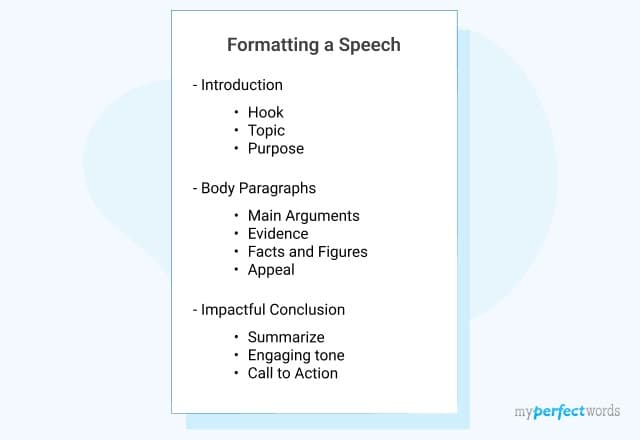
How to Start A Speech - 13 Interesting Ideas & Examples

20+ Outstanding Speech Examples for Your Help
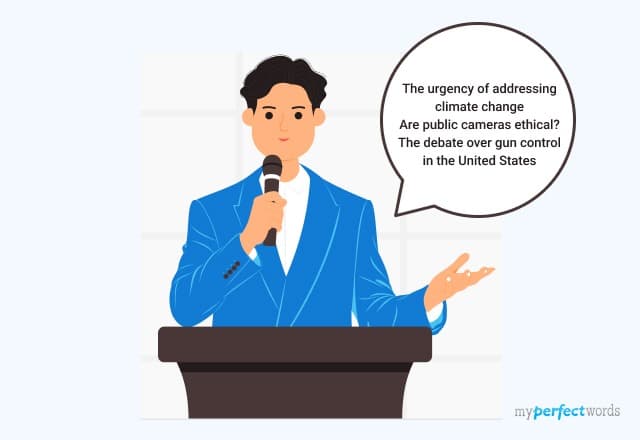
Common Types of Speeches that Every Speechwriter Should Know
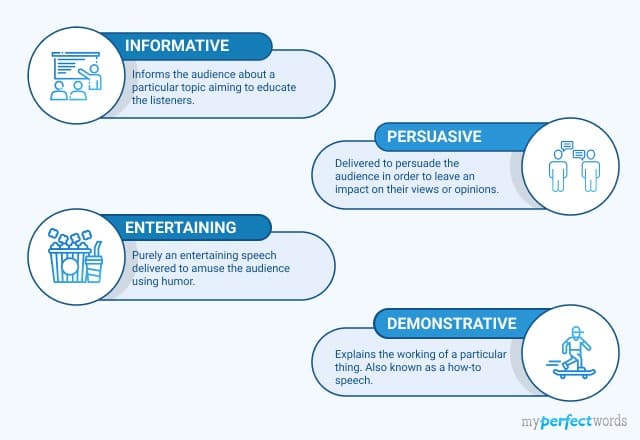
Good Impromptu Speech Topics for Students

Entertaining Speech Topics for Your Next Debate
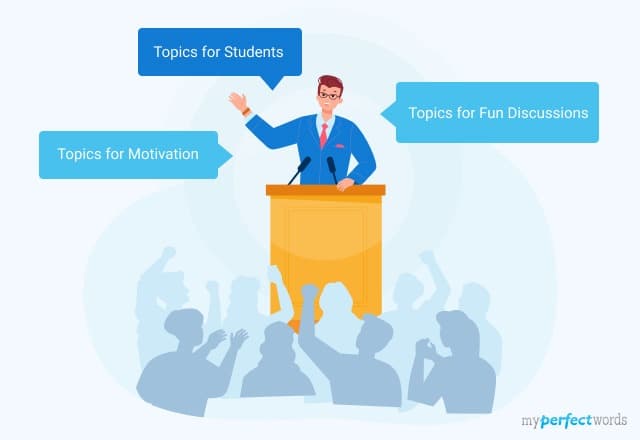
Understanding Special Occasion Speech: Types, Steps, Examples and Tips

Introduction Speech- Tips & Examples
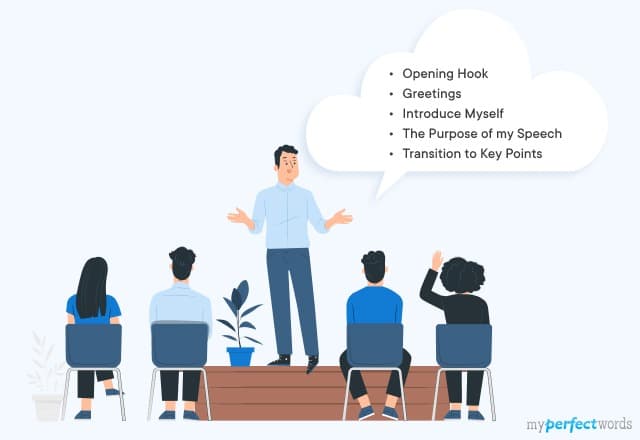
How to Write A Good Acceptance Speech?

Writing A Presentation Speech In English: Tips And Examples

Commemorative Speech - Writing Guide, Outline & Examples
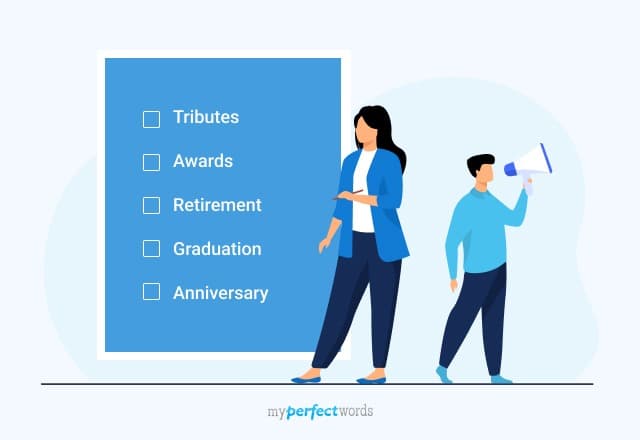
Farewell Speech | Writing Tips & Examples

A Graduation Speech Writing Guide with Examples
